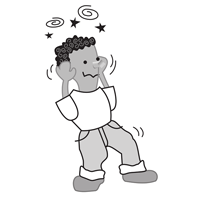Mold is everywhere.
Just leave some ‘perishable’ food out of the refrigerator for a day or so and see how long it takes mold to show up. It’s been estimated that 25% of the biomass of the planet is mold or fungi.
It has been known for centuries that mold and fungi can cause health problems. Mold allergy can cause respiratory problems like chronic sinusitis and asthma, and related yeast allergy can cause skin rashes, abdominal symptoms and fatigue. Fungal infections can involve everything from toenail problems to pneumonia to ringworm. There is a general consensus in the medical community regarding allergies and infections, but the third category of mold injury is more controversial: toxicity.
There is no question that molds produce toxins (just try eating a poisonous mushroom) and that these toxins can migrate freely in the environment, but it can be very difficult to prove that mold toxins are causing illness in a particular person.
Diagnosing mold toxicity requires first of all a high index of suspicion. Studies of mold toxicity have described the following common symptoms:
- Fatigue
- Muscle and/or joint pain
- Neurocognitive dysfunction
- Sinusitis
- Headache
- Gastrointestinal problems
- Shortness of breath
- Anxiety/depression
- Insomnia
- Dizziness
Of course these are common symptoms in other conditions as well, but if there is also a history of exposure to a water-damaged building or visible mold, then one should certainly consider a diagnosis of mold toxicity.
There are two ways to demonstrate exposure to mold toxins.
ONE is to get air samples from an area of exposure (e.g. home or business) looking for mold spores.
TWO and more recently, a preferred approach has been to measure mold toxins from the patient directly. This can often be done with a special urine sample.
If mold toxins are present in the individual and there is an appropriate history of exposure and typical symptoms, then a presumptive diagnosis of mold toxicity can be made.
Unfortunately, the treatment of mold toxicity is very complicated and demanding. Mold toxins can not be fully removed from porous materials, so any significant mild toxicity requires that the individual leave that environment as well as the clothes and furnishings that were exposed (glass, ceramic and metal objects may be washed and retained).
Mold toxins cause mitochondrial damage through their effect on glutathione and methylation, so those metabolic pathways need to be supported with nutritional agents. Most individuals may harbor fungal organisms in the sinuses and this can be treated with special inhaled antimicrobials. Mold toxins excreted into the intestines can be re-absorbed and binding agents are used to prevent this.
With good environmental control and a comprehensive metabolic program, mold toxicity can be effectively treated, but the critical initial step is to think of this diagnosis in the first place.







